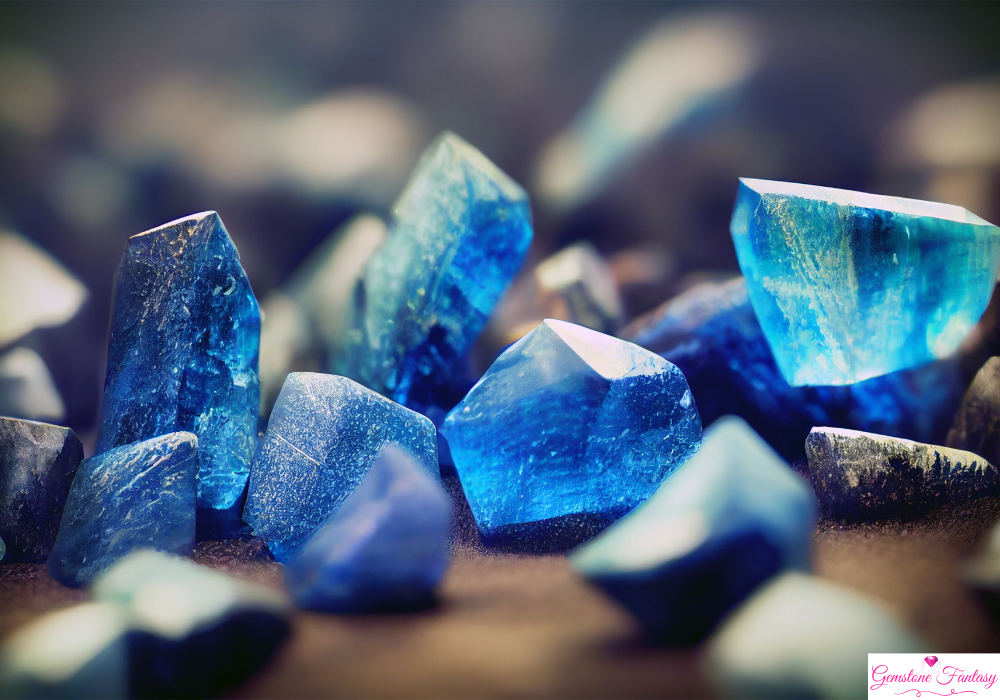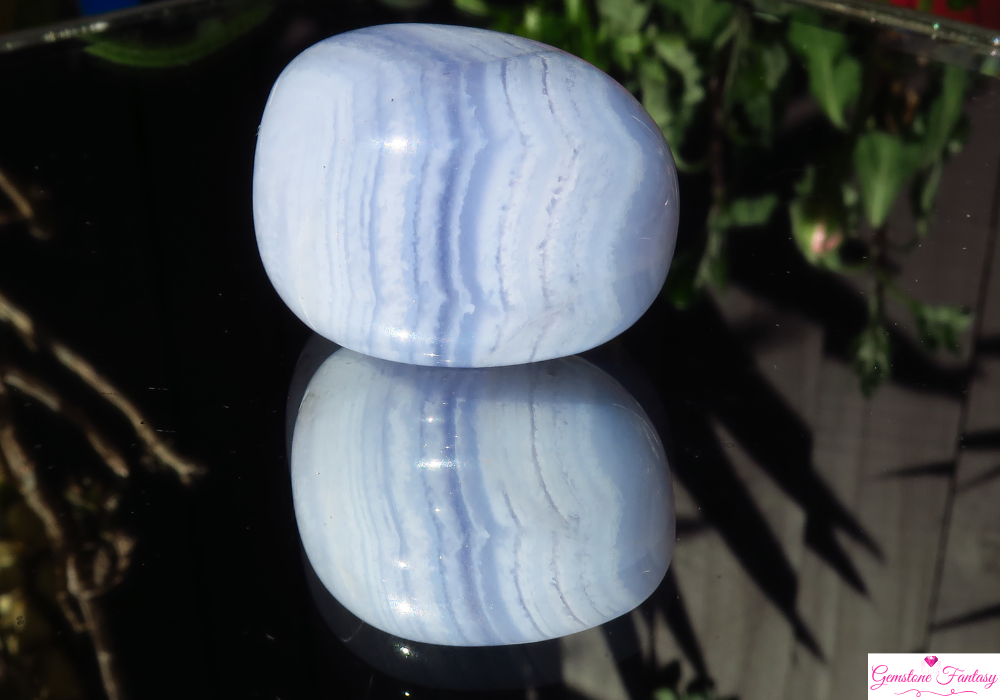Kyanite is a striking blue silicate mineral that is admired for its vibrant color and unique properties. Known for its deep, often streaked hues, kyanite is used in both jewelry and industrial applications. Its name derives from the Greek word “kyanos,” meaning “deep blue.” However, kyanite is found in various colors, though blue remains the most popular and well-known. Its fascinating characteristics, such as variable hardness and strong metaphysical associations, make it a distinct gemstone in the world of minerals.
Geological Formation
Kyanite forms in metamorphic rocks, typically during the high-pressure alteration of clay-rich sediments. This process occurs deep within the Earth’s crust, where intense pressure and temperature cause the minerals to transform. Kyanite often appears in schists and gneisses, alongside other minerals like garnet, staurolite, and quartz.
Kyanite deposits are found worldwide, with significant sources in the United States (particularly in Virginia and North Carolina), Brazil, Switzerland, and Nepal. These regions produce some of the finest quality kyanite, characterized by deep blue hues and clear, striated crystals.
Varieties and Classifications
Though commonly associated with its rich blue color, kyanite comes in a variety of colors depending on the impurities present during its formation. Some notable varieties include:
- Blue Kyanite: The most popular form, prized for its striking blue color ranging from pale sky blue to deep indigo.
- Green Kyanite: Less common, this variety has a soft, minty green hue and is usually found in Brazil.
- Orange Kyanite: Found in Tanzania, this rare variety gets its color from manganese impurities and has a warm, orange tone.
- Black Kyanite: Known for its fan-like formation, this variety is typically used in metaphysical practices rather than jewelry.
- Colorless Kyanite: Also known as white kyanite, this variety is often translucent and features subtle, clear hues.
Cultural Significance and Folklore
Kyanite holds deep metaphysical significance in various cultures, particularly in spiritual and healing practices. Known as the “stone of alignment,” kyanite is believed to balance the chakras and promote a state of calmness. It is often associated with communication and clarity, helping individuals express themselves effectively.
In ancient lore, kyanite was said to have been used by travelers as a compass due to its ability to align with Earth’s magnetic field. This story adds to its reputation as a stone that provides guidance and direction, both literally and figuratively.
In many traditions, kyanite is considered a “high vibration” stone, used to enhance meditation and spiritual awakening.
Birthstone and Zodiac Connections
While kyanite is not a traditional birthstone, it is sometimes linked to the zodiac sign Libra (September 23 – October 22). Librans are known for their diplomatic and balanced nature, traits that align well with kyanite’s reputation for promoting harmony and equilibrium.
Kyanite is also connected to the throat and third-eye chakras, making it a favored gemstone for those seeking to enhance communication skills, intuition, and inner vision. Some believe that wearing or meditating with kyanite helps to strengthen self-expression and spiritual insight.
Healing and Metaphysical Properties
Kyanite is widely regarded in the metaphysical world for its healing properties, particularly its ability to align the chakras and promote emotional balance. Some of the common metaphysical associations with kyanite include:
- Emotional Healing: Kyanite is believed to help individuals overcome feelings of anxiety, anger, and frustration. It is said to restore emotional balance and promote a sense of inner peace.
- Communication and Expression: As a stone linked to the throat chakra, kyanite is thought to enhance communication skills and aid in self-expression, helping users articulate their thoughts more clearly.
- Spiritual Growth: Practitioners often use kyanite during meditation to enhance intuition, psychic abilities, and spiritual awareness. It is believed to open pathways for higher consciousness.
- Energy Alignment: Kyanite is said to have the unique ability to align all the chakras without the need for conscious effort, making it a powerful tool for energy healing.
Though these properties are associated with kyanite, it is important to approach such beliefs with an open mind.
Popular Uses in Jewelry and Design
Kyanite is a beautiful and versatile gemstone used in various forms of jewelry, particularly when cut and polished to showcase its rich color and unique structure. Despite its relatively moderate hardness (ranging from 4 to 7.5 on the Mohs scale depending on the axis), kyanite is popular in rings, earrings, pendants, and bracelets. Its striking blue hue makes it an attractive choice for those seeking a distinctive, colorful gemstone.
In addition to traditional jewelry, kyanite is often used in:
- Metaphysical tools: Rough or polished kyanite is popular in crystal healing sets and meditation practices.
- Decorative items: Polished kyanite crystals can also be used in home décor, often placed in spaces to enhance tranquility and clarity.
Because of its variable hardness and tendency to have inclusions, kyanite is most suitable for pieces like earrings and pendants that are less exposed to daily wear and tear.
How to Identify Authentic Kyanite
When purchasing kyanite, it’s important to identify authentic gemstones to ensure you’re getting a genuine product. Here are a few tips to help you spot real kyanite:
- Color: Natural blue kyanite should display streaks of varying shades of blue, often with a subtle shimmer.
- Clarity: Kyanite commonly contains inclusions, but high-quality stones should be translucent and relatively free from large fractures.
- Hardness Test: Kyanite’s unique property of having different hardness levels along different axes can be a clue. It should be harder along one axis and softer along another.
- Certification: For higher-priced kyanite, it’s wise to request certification from a reputed gemological institute to verify its authenticity and quality.
Tips for Caring and Storing
Kyanite, with its varying hardness, requires careful handling to maintain its beauty. Here are a few tips for caring for your kyanite gemstones:
- Cleaning: Clean kyanite using warm, soapy water and a soft cloth. Avoid using ultrasonic cleaners or harsh chemicals, as these can damage the gemstone.
- Avoid Hard Impact: Due to its natural structure and varying hardness, kyanite can be prone to breaking under impact. It’s best to avoid wearing kyanite jewelry during physically demanding activities.
- Storage: Store kyanite separately from harder gemstones, like diamonds or sapphires, to prevent scratches.
Market Trends and Pricing
Kyanite remains a relatively affordable gemstone, with its price largely depending on color, clarity, and size. High-quality blue kyanite with vivid color and minimal inclusions typically commands higher prices. Orange and green varieties, being rarer, may also fetch higher prices in the market.
The demand for kyanite has increased, particularly among those interested in its metaphysical properties and distinctive color. In terms of industrial use, kyanite is also used in refractory products due to its heat resistance.
Final Thoughts
Kyanite is a gemstone with remarkable beauty, rich cultural significance, and fascinating properties. Whether admired for its metaphysical associations, used in elegant jewelry, or cherished for its soothing blue hues, kyanite offers something for everyone. Proper care and attention to authenticity will ensure that your kyanite gemstones remain a treasured part of your collection for years to come.

















